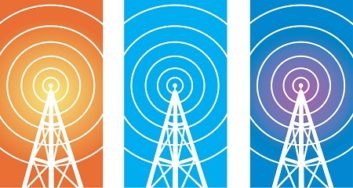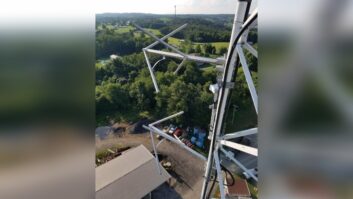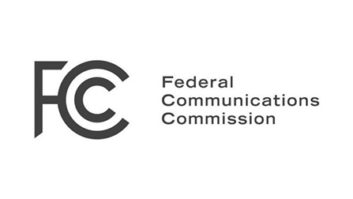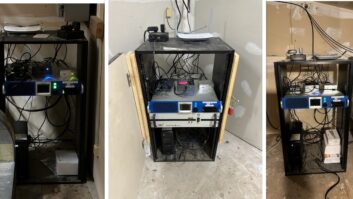 In mid-April, the FCC Chairman released a draft proposed Report and Order that is scheduled to be considered at the May 9 Open Commission Meeting amending the FCC’s rules and procedures regarding FM translator interference. The FCC states that the rule and procedure changes would: (1) limit or avoid protracted and contentious interference disputes, (2) provide translator licensees additional investment certainty and flexibility to remediate interference, and (3) provide affected stations earlier and expedited resolution of interference complaints.
In mid-April, the FCC Chairman released a draft proposed Report and Order that is scheduled to be considered at the May 9 Open Commission Meeting amending the FCC’s rules and procedures regarding FM translator interference. The FCC states that the rule and procedure changes would: (1) limit or avoid protracted and contentious interference disputes, (2) provide translator licensees additional investment certainty and flexibility to remediate interference, and (3) provide affected stations earlier and expedited resolution of interference complaints.
Below is a greatly simplified description of the FCC’s imminent rule changes, and the ramifications for both existing FM stations and FM translators.
Of great benefit to FM translators, FM translators will be able to move to any same-band channel as a minor change upon a simple showing of interference reduction, rather than as now being limited to first, second, third and I.F. channels. For FM translators in non-frequency-congested areas, this will offer opportunities for both interference complaint remediation and facility improvements in making changes.
Existing stations will have to be wary, of course, under this new any-channel rule. Nearby FM translators landing on their co-channel or an adjacent frequency could cause interference. The FCC has adopted a modified pre-grant objection procedure under Section 74.1204(f) of its rules in which a specified number of listeners within the 45 dBμ contour of the existing station can proactively complain and the FM translator move application will not be granted.
For FM translators already on the air, the FCC’s new rules and procedural changes to Section 74.1204(a)(3) promise to expedite interference disputes and removal of an allegedly interfering FM translator from the air.
[FCC Outlines FM Translator Interference Changes]
The commission, in its Notice of Proposed Rulemaking, had proposed the 54 dBμ outer contour limit for interference complaints. But the FCC, responding to broadcaster comments that FM stations have substantial numbers of listeners out to much further contours, is adopting an outer contour limit of 45 dBμ beyond which FM translator interference complaints will not be accepted. The 45 dBμ contour for a maximum height Class A (6 kW) FM station extends approximately 35 miles; for a Class C3 (25 kW) station extends approximately 44 miles; for a Class C2 (50 kW) station extends approximately 53½ miles; for a Class C1 (100 kW) station extends approximately 68 miles, and for a full Class C extends approximately 83½ miles. FM translator interference complainants outside of those approximate mileages will no longer be accepted.
Procedurally, in accepting FM translator interference complaints, the FCC will now require a certain number of complainants based upon the population served by the complaining station. The FCC will no longer question the bona fides of complainants. Complaints must contain information as to the complainant’s name, address, regular listening (at least twice a month), the specific area of interference, and that the complainant has no affiliation with the subject station, all over the complainant’s signature (an electronic signature is acceptable).
A station complaining of translator interference must also submit, in addition to the required number of listener complaints, an engineering study with plots of the complained-of areas of interference and the undesired-to-desired signal ratio at each area of interference showing that the FM translator signal exceeds -20 dB for co-channel, -6 dB for first adjacent channel, or 40 dB for second and third adjacent channels. Further required is a statement that the existing station has informed the translator licensee of the interference and attempted a private resolution.
[NJBA Opposes Contour Limiting Aspect of FM Translator NPRM]
Upon these submissions, the burden of proof shifts to the FM translator. A failure to then remediate all of the interference complaints by the FM translator licensee within a target time period of 90 days will result in the FM translator being ordered off the air.
A calculation of how many FM translators will be affected by the combination of the 45 dBμ contour limit, and the more strict procedural rules, is difficult. Had the FCC simply adopted a contour limit, that would have been a net plus for FM translators. The adoption of strict procedural rules under which it may be impossible to challenge the claimed validity of complainants, however, may tilt the balance substantially in favor of existing FM stations.
For 90% of the now-authorized FM translators, engineering calculations I have seen indicate that there will be some areas of predicted interference inside the FCC’s proposed 45 dBμ protected contour. Whether predicted interference is actual interference is another consideration, of course, but with the FCC’s new policy of not vetting interference complainants, any interference complaints fitting the procedural requirements may imperil an FM translator.
Between any two proximate FM stations, particularly FM stations on the same frequency, there will always be an area of interference in which neither FM signal overrides the other. The FCC’s engineering rules authorizing FM stations are based upon specified protected contours and interference contours. If an interference contour crosses a protected contour, interference is predicted.
[FCC Rejects Prometheus’ Petition to Reconsider FM Translator Locations]
Now, however, the FCC is putting into place a standard in which the protected contour for existing stations in relation to proximate FM translators is far greater than those used for the initial evaluation of the FM translator. In favor of the FM translator, there is now a contour limit in place where previously there was none. But the contour limit is coupled with interference procedures that are now far more favorable to existing FM stations.
It is possible that broadcasters who have been fortunate to obtain FM translators may now find that these changed rules and procedures have the potential to put such FM translators in jeopardy if existing stations use the new procedures to pursue extending their signal as far as possible. Sooner or later, long-existing FM translators could be challenged as there remains no time limit for interference complaints. But the converse may also be true in which existing stations will now only complain of actual destructive interference to listeners considered to be within the station’s market, as gone is the opportunity for one rogue FM listener to personally obtain the shut-down of an FM translator.
[Know Your FM Translator Basics]
The effect of the new rules upon each FM translator will be different. To assess the good or the bad of the new rules on an existing station or FM translator, ask your engineer to: (1) draw the 45 dBμ contour of the nearest co-channel station to your FM translator, and (2) calculate the required FM translator power level so as not to exceed a -20 db U/D signal ratio at that 45 dBμ contour (i.e. the translator power level to produce a 25 dBμ F(50,10) signal at that FM translator’s 45 dBμ contour). If the FM translator power cannot be reduced to a level in which there is no overlap, the FM translator is potentially at risk of being ordered off the air. Similar calculations using applicable U/D signal ratios can also be performed for adjacent channel FM translators.
Or, at the risk of really confusing things, to do a quick and dirty calculation on an FM translator and a co-channel station (keeping in mind this will not account for directional antennas), go to the FCC’s FM and TV Propagation Curves Calculator, and:
- Put “F(50,50) Service Contour” in the first drop-down for the existing protected station, and “F(50,10) Interfering Contour” for the FM translator.
- Put “FM Radio” in the second drop-down.
- Put “Distance” in the third drop-down.
- And do a calculation using the ERP, HAAT (be careful to use meters) and the desired field of 45 dBμ for the full-service station and 25 dBμ for the FM translator.
[Let’s Talk About FM Translators]
This calculation will give the distance to each contour in kilometers. The sum of adding the distances to those contours together will be how many kilometers an FM translator must be from the co-channel existing FM station to not have the FM translator be in potential jeopardy under the FCC’s imminent rule and procedures change.
The draft proposed Report and Order is subject to being modified before the commission votes on it at its May 9 meeting. While the adoption of the new rules and procedures is not assured, the FCC Chairman would presumably not schedule the item for the commission meeting if he had not have needed affirmative votes.
The draft Report and Order is released as part of the chairman’s transparency efforts. It allows the public a brief final time period to comment upon specific rule changes. The cover page warns in the first footnote that any such public comments must be filed in MB Docket No. 18-119 through the FCC’s ECFS filing system, and must abide by the FCC’s Sunshine Agenda rules which generally prohibit such comments in the week immediately prior to a Commission meeting. This means that broadcasters now have until approximately May 2 to make final comments to the FCC.
If the FCC is getting something wrong here, now is the final opportunity prior to the adoption of the new rules and procedures to tell the FCC Chairman and Commissioners. If the FCC is getting it right, then stand by for news on the vote at the May 9 FCC meeting and the effective date of the new FCC FM translator rules and procedures.
A version of this article originally appeared on Radio Ink and is reproduced with permission.
John Garziglia is a communications attorney at Womble Bond Dickinson.












